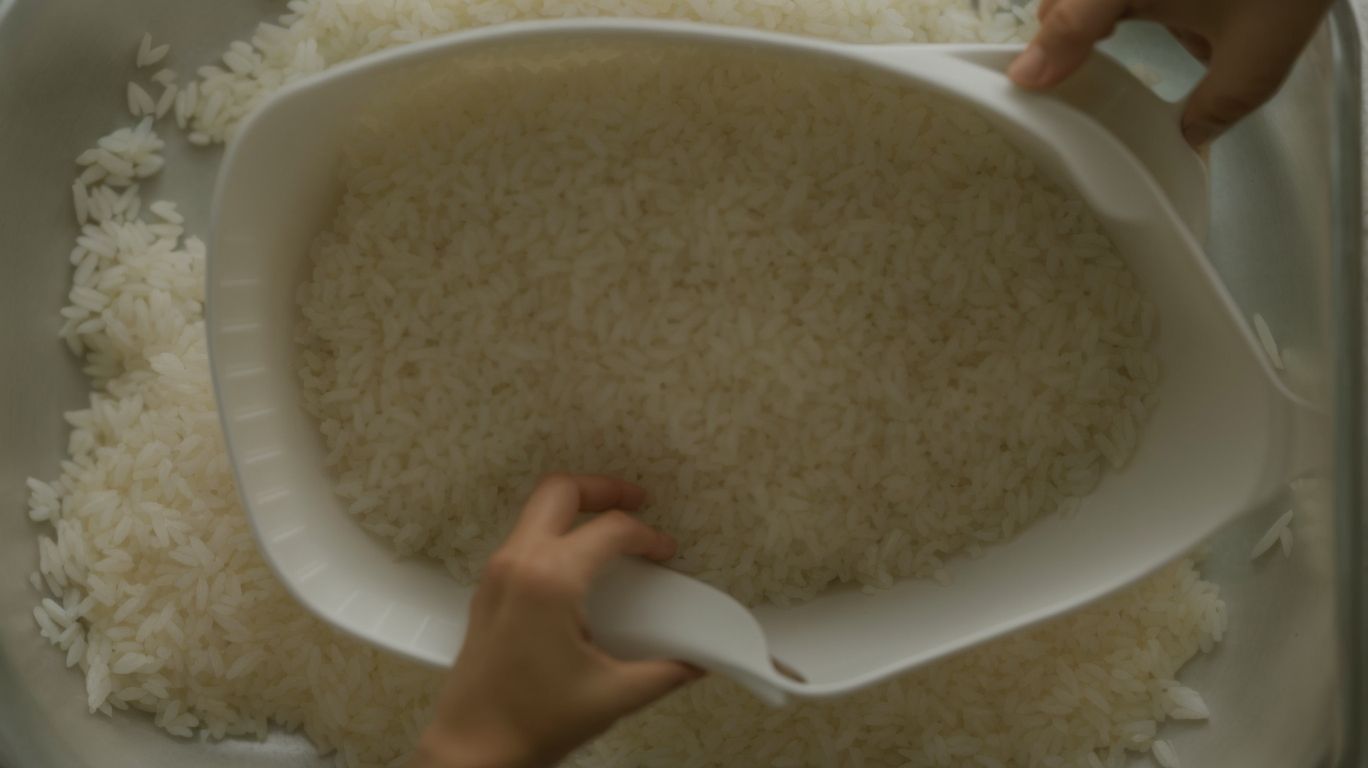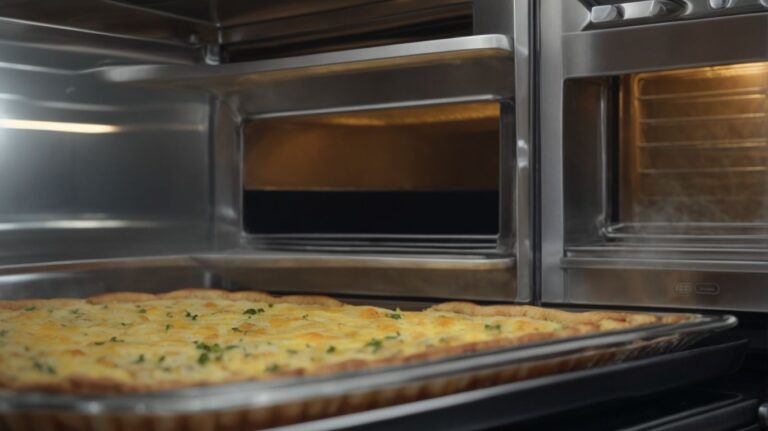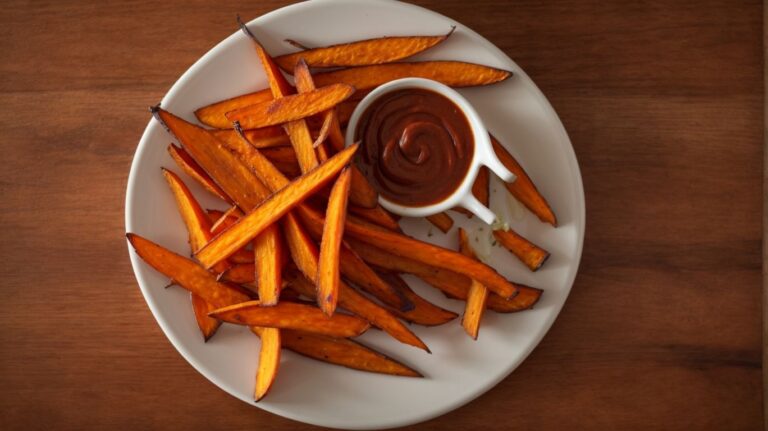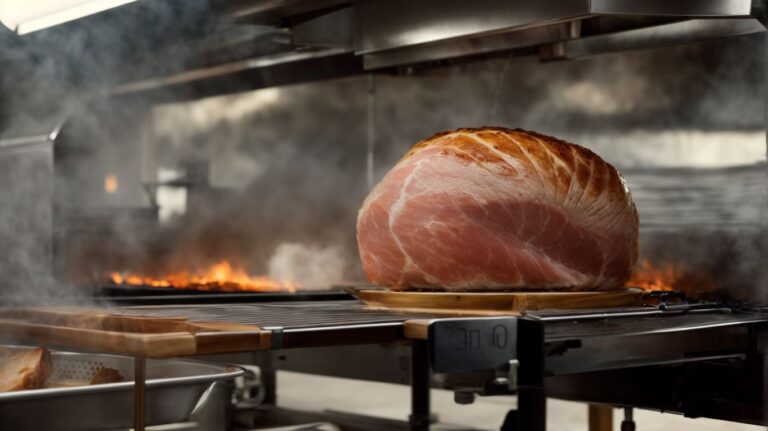How to Cook Rice From Frozen?
Have you ever wondered about the convenience of cooking frozen rice?
In this article, we will delve into the world of frozen rice – what it is, why someone might need to cook rice from frozen, and what types of rice can be frozen.
We will also explore the proper way to freeze rice, how to cook it from frozen using different methods, and provide tips on avoiding mushy rice and adding flavor.
Stay tuned to discover the secrets of cooking frozen rice like a pro!
Key Takeaways:
What Is Frozen Rice?
Frozen rice is cooked rice that has been frozen and stored for later consumption, offering convenience and time-saving benefits.
Preparing frozen rice involves cooking a batch of rice, letting it cool completely, portioning it into airtight containers or freezer bags, then labeling with the date for easy identification. When ready to enjoy, thaw the frozen rice overnight in the refrigerator or use the defrost setting on the microwave. Reheat the rice by adding a splash of water and covering it while microwaving to retain moisture. Frozen rice is ideal for meal prepping as it can be easily incorporated into various dishes like stir-fries, fried rice, or as a side dish, saving you both time and effort.
Why Would Someone Need to Cook Rice From Frozen?
Cooking rice from frozen is ideal for quick and easy meal preparation, especially for busy individuals or those looking to streamline their cooking process.
When cooking rice from frozen, you can skip the need for washing and measuring rice, making it a time-saving method. Since frozen rice is already partially cooked, it reduces the overall cooking time significantly, saving you precious minutes in the kitchen. Cooking from frozen helps prevent the growth of harmful bacterial spores that can develop when rice is left at room temperature for too long.
This method is perfect for incorporating into your meal prep routine, as you can cook a large batch of rice, portion it out, and freeze it for later use. This way, you always have a ready-to-go side dish or base for a meal, eliminating the need to cook rice from scratch every time.
What Types of Rice Can Be Frozen?
Both white rice and brown rice can be frozen successfully, retaining their texture and flavor upon reheating.
When considering which type of rice to freeze, one should take into account their differing characteristics.
- White rice, known for its milder taste and fluffy texture, tends to freeze well without a significant change in overall quality.
- On the other hand, brown rice, with its nuttier flavor and chewier texture due to extra layers of bran and germ, can also be frozen effectively with slight variations in texture post freezing.
White rice typically has a higher glycemic index compared to brown rice, which can impact blood sugar levels. These differences in flavor, texture, and glycemic index should be considered when deciding which rice variety to freeze for later use.
Can White Rice Be Frozen?
White rice can be frozen effectively, ensuring that it maintains its quality and taste when reheated.
For best results, it’s important to cool down the cooked rice completely before freezing. Once the rice has cooled, portion it into meal-sized servings to facilitate easy reheating. Properly storing the rice in airtight containers or freezer bags will help prevent drying out and maintain its moisture content. Be sure to remove as much air as possible from the containers before sealing to avoid freezer burn. Additionally, labeling the containers with the date of freezing can help track freshness and rotation. When reheating frozen rice, adding a splash of water before microwaving can prevent it from getting too dry.”
Can Brown Rice Be Frozen?
Brown rice is suitable for freezing and can be reheated to retain its nutty flavor and chewy texture.
Freezing brown rice is a convenient way to extend its shelf life and always have a batch ready for quick meals. To freeze brown rice properly, allow it to cool completely after cooking to avoid excess moisture that can lead to a mushy texture. Once the brown rice has cooled, portion it into individual serving sizes using airtight containers or freezer bags to prevent freezer burn. Label each container with the date of freezing for easy tracking.
In terms of thawing frozen brown rice, transfer it from the freezer to the refrigerator the night before you plan to use it. This gradual thawing process helps maintain the rice’s texture. Avoid leaving the rice at room temperature for too long, as this can invite unwanted pests like rice weevils. For a quicker thawing method, place the frozen brown rice in the microwave and use the defrost setting.
How to Properly Freeze Rice?

Credits: Poormet.Com – Henry Ramirez
Properly freezing rice involves cooking it, allowing it to cool, portioning it, and then freezing it in suitable containers for future use.
To begin the process, cook the rice using your preferred method, whether it’s in a rice cooker, on the stove, or in an Instant Pot. Once the rice is cooked, spread it out on a cookie sheet in a thin, even layer to speed up the cooling process. Let the rice cool to room temperature to prevent excess moisture buildup.
Next, carefully portion the cooled rice into individual servings or meal-sized portions. Transfer the portions into plastic bags or airtight containers, ensuring they are tightly sealed to prevent freezer burn. Label each container with the date before placing them in the freezer for storage.
Step 1: Cook the Rice
The first step in freezing rice is to cook it according to your preferred method, whether on the stovetop, in a rice cooker, or using an Instant Pot.
Simmering the rice in a pot can yield fluffy, separate grains, perfect for dishes like fried rice or stir-fries. A rice cooker offers convenience and consistently cooked rice with the press of a button, while an Instant Pot can speed up the process with its pressure-cooking function.
For added flavors, consider using broth instead of water, adding spices like turmeric or saffron for color and aroma, or mixing in vegetables for a more wholesome dish. The possibilities are endless in the culinary world when it comes to rice, from classic jasmine to exotic basmati varieties.
Step 2: Cool the Rice
After cooking, allow the rice to cool to room temperature before proceeding with portioning and freezing to prevent condensation and maintain the rice’s quality.
Proper cooling of rice is crucial as it helps to prevent the formation of large chunks due to excess moisture or steam trapped during the cooking process. When rice is not cooled properly, it can lead to an undesirable texture, making it overly sticky or mushy, especially when frozen and reheated. By allowing the rice to cool adequately, you can also enhance its flavors and prevent it from absorbing too much liquid or becoming too dry. The cooling process also plays a key role in retaining the integrity of rice dishes such as soups, ensuring that the grains maintain their individuality and don’t clump together.
Step 3: Portion and Freeze the Rice
Once the rice is cooled, portion it into meal-sized servings, place it in freezer-safe containers or bags, label them with dates, and freeze them promptly for future use.
When portioning the rice, ensure the servings are suitable for one meal to avoid wastage and allow for easy reheating later. Choose containers or bags specifically designed for freezing to maintain the quality of the rice. Labeling with dates is crucial to keep track of freshness and avoid confusion. Before placing the containers in the freezer, check that the sealing is secure to prevent any liquid from leaking out and causing a mess in the freezer.
When ready to defrost the rice, do so in the refrigerator for safe thawing, or incorporate it directly into dishes if it contains a bit of liquid. Make sure to reheat it thoroughly, stirring occasionally to distribute the heat evenly.
How to Cook Frozen Rice?
To cook frozen rice, you can use methods such as stovetop reheating, microwave defrosting, or oven baking to restore its texture and flavor effectively.
When reheating frozen rice on the stovetop, start by placing the rice in a non-stick pan with a splash of water to help prevent sticking and maintain moistness. Cover the pan and heat over low to medium heat, stirring occasionally until the rice is heated through thoroughly.
For microwave defrosting, transfer the rice to a microwave-safe dish, cover, and microwave on medium power for a few minutes, stopping to stir every minute to ensure even heating. This method is quick but requires attention to avoid drying out the rice.
Alternatively, oven baking frozen rice involves preheating the oven to a low temperature, transferring the rice to a baking dish, covering it with foil to retain moisture, and baking until heated all the way through.
Method 1: Stovetop
Using a skillet or pan on the stovetop is a traditional method to cook frozen rice, providing control over heat and moisture levels for optimal reheating.
-
When reheating frozen rice on a stovetop, start by heating a tablespoon of oil or butter in the skillet over medium heat. This will prevent sticking and enhance the texture of the rice.
-
Once the oil is heated, add the frozen rice to the pan. Use a spoon to break up any large clumps and spread the rice evenly to ensure even heating.
-
To manage moisture levels, cover the skillet with a lid and occasionally stir the rice with a spoon to redistribute the heat.
-
You can also enhance the flavor by adding seasoning or herbs to the rice during the reheating process.
Method 2: Microwave
Microwaving frozen rice is a convenient and quick option, requiring proper container selection and heating intervals to prevent drying out or uneven reheating.
When utilizing the microwave to cook frozen rice, opt for a microwave-safe container such as glass or ceramic to avoid any chemical leaching or melting plastic issues that might compromise the dish’s safety.
Before heating, remember to follow defrosting strategies, either by leaving the rice in the fridge overnight or using the microwave’s defrost setting to prevent the growth of harmful bacteria or spores while maintaining the rice’s taste and texture.
During the heating process, cover the dish with a damp paper towel to trap moisture and ensure the rice remains moist and evenly reheated, stirring occasionally to distribute the heat evenly.
Method 3: Oven
Baking frozen rice in the oven can yield a crispy texture and enhanced flavors, with options to add toppings or mix-ins for varied meal preparations.
When using the oven method for cooking frozen rice, preheat the oven to 400°F to ensure a uniform cooking process. This temperature allows the rice to thaw gradually, avoiding a mushy texture. To enhance the flavors, consider infusing the rice with spices like cumin, turmeric, or a hint of chili for a kick. You can customize the rice by adding ingredients such as diced vegetables, cooked meats, or even a drizzle of soy sauce to create unique and flavorful rice dishes.
Tips for Cooking Frozen Rice

Credits: Poormet.Com – Nicholas Young
When cooking frozen rice, follow tips to prevent mushiness, enhance flavor, and store leftovers properly for future consumption.
One effective way to prevent mushiness when reheating frozen rice is to spread it out on a cookie sheet in a thin layer. This allows for even heating and helps maintain the desired texture. Consider adding a splash of broth or a drizzle of olive oil to the rice before reheating to infuse extra flavor.
For optimal meal prep, portion the cooked and frozen rice into single servings and label them with the date to keep track of freshness. When storing, use airtight containers or heavy-duty freezer bags to minimize the risk of freezer burn.
How to Avoid Mushy Frozen Rice?
To avoid mushy frozen rice, ensure proper reheating techniques, such as using measured liquid, fluffing the rice, and incorporating additional seasonings for improved texture.
One key strategy to prevent mushiness in reheated rice is to adjust the liquid ratio when cooking the rice initially. For optimal results, try using a bit less water than usual to keep the grains from becoming overly soft when reheating. This will help maintain the desired texture.
- After the rice has been frozen, remember to fluff it gently with a fork before reheating. Breaking up any clumps will promote even heating, preventing pockets of undesirable mushiness.
- Consider experimenting with various seasonings like herbs, spices, or even a splash of citrus juice to enhance the flavor profile of the reheated rice while also masking any potential blandness that sometimes plagues reheated dishes.
How to Add Flavor to Frozen Rice?
Enhance the flavor of frozen rice by incorporating herbs, spices, sauces, or aromatic ingredients during the reheating process to create diverse and enticing meal options.
For a fusion twist, consider adding a mix of Chinese five-spice powder and soy sauce while heating the rice. This blend infuses a rich, flavorful essence reminiscent of traditional Chinese cuisine, adding depth to the dish. To take it up a notch, you can top the rice with a handful of finely chopped spring onions and toasted sesame seeds for a burst of freshness and crunch.
How to Store Leftover Cooked Frozen Rice?
Store leftover cooked frozen rice in airtight containers or freezer bags, ensuring proper labeling with dates and arranging them flat on a cookie sheet for efficient storage and organization.
When selecting containers for freezing cooked rice, opt for options specifically designed for freezer use to maintain freshness longer.
- Plastic containers with tight-sealing lids are ideal for protecting the rice from freezer burn and absorbing other odors in the freezer.
- Alternatively, heavy-duty freezer bags are a convenient and space-saving option for storing smaller portions of rice.
Ensure to label each container or bag with the date of preparation to keep track of freshness and prevent confusion. Organizing the labeled containers flat on a cookie sheet before freezing helps them freeze faster and prevents them from sticking together, making it easier to grab individual portions when needed.
Frequently Asked Questions
How to Cook Rice From Frozen?
Frozen rice is a convenient and time-saving option for busy cooks. Here are some frequently asked questions and answers on how to cook rice from frozen.
1. Can you cook rice from frozen?
Yes, it is possible to cook rice from frozen. Frozen rice is already partially cooked, so it just needs to be reheated to be ready to serve.
2. What is the best way to cook rice from frozen?
The best way to cook rice from frozen is by using the stovetop method. Simply place the frozen rice in a pot, add a little bit of water, and heat over medium-high heat until the rice is heated through.
3. How long does it take to cook rice from frozen?
Cooking time will vary depending on the type of rice and the amount you are cooking. Typically, it takes about 8-10 minutes to cook frozen rice on the stovetop.
4. Can you cook rice from frozen in the microwave?
Yes, it is possible to cook rice from frozen in the microwave. However, this method may result in unevenly cooked rice. It is best to use the stovetop method for more evenly cooked rice.
5. Do you need to thaw frozen rice before cooking?
No, you do not need to thaw frozen rice before cooking. In fact, it is recommended to cook frozen rice without thawing to avoid the growth of harmful bacteria.
6. Can you freeze cooked rice for later use?
Yes, you can freeze cooked rice for later use. Allow the cooked rice to cool completely and store it in an airtight container in the freezer. When ready to use, simply reheat the rice on the stovetop or in the microwave.




